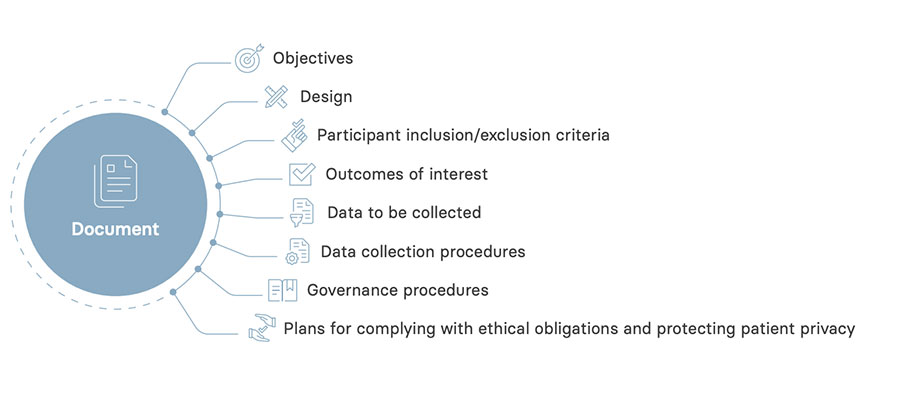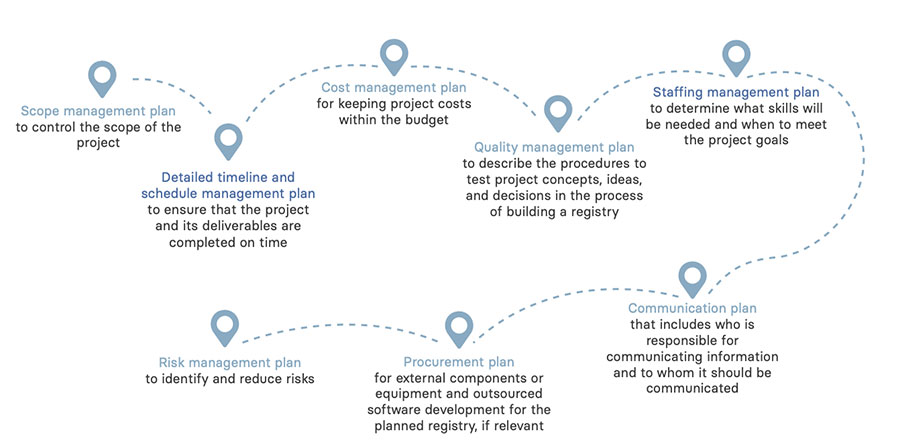Delivering your registry
Document your decisions and map out the road to success
Having agreed to all the details of your registry with your advisory committee, you now need to document all the decisions you have made in a protocol and linked standard operating procedures.
Not only will these usually be required when you are applying for your various permissions, but the writing of these provides a test of whether everything is clear.
Developing standardized operating procedures also makes your registry more robust and sustainable. When staff members leave, the new staff can familiarise themselves with how and why things are done, without relying on one individual to explain everything. Although this takes time upfront, it saves time in the long run.
Two of the primary documents are a registry protocol and a project plan.
A registry protocol documents the objectives of the registry and describes how they will be achieved. While this can be kept simple, a full study protocol will establish the goals, design, participant inclusion/ exclusion criteria, outcomes of interest, data to be collected, data collection procedures, governance
procedures, and plans to comply with ethical obligations and protect patient privacy.
Develop a study plan or protocol
The study plan documents the objectives of the registry and describes how those objectives will be achieved.

A project management tool, the project plan is essential for planning and delivering individual aspects of your registry: guiding the wider team’s collective efforts, tracking progress, and delivering your registry on time and on budget. This can also be kept relatively simple, but the following elements should be considered:
- Scope management plan, which controls the scope of the project
- Detailed timeline and schedule management plan to ensure that the project and its deliverables are completed on time
- Cost management plan for keeping project costs within the budget
- Quality management plan to describe the procedures to be used to test project concepts, ideas, and decisions in the process of building a registry
- Staffing management plan to determine what skills will be needed and when to meet the project goals
- Communication plan that includes who is responsible for communicating information and to whom it should be communicated
- Procurement plan for external components or equipment and/or outsourced software development for the planned registry, if relevant
- Risk management plan to identify and mitigate barriers and legal or other risks.
While your registry director or a designated member of the executive team may develop and oversee the project plan, it may be worthwhile to employ or contract a project manager with the appropriate professional skills and a track record of success.
Develop a project plan
Developing an overall project plan is critical so the registry team has a roadmap to guide their collective efforts. Depending on the complexity of the registry project, the project plan may include some or all of the following elements:

